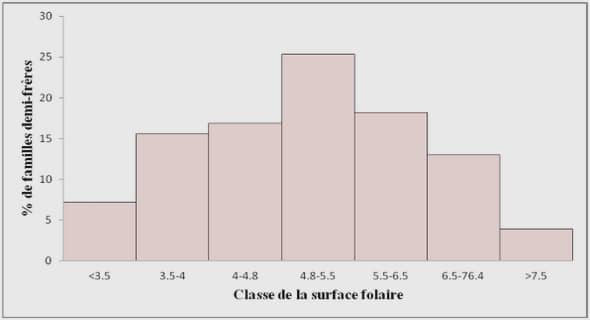Télécharger le fichier original (Mémoire de fin d’études)
The research advance of the petrogenesis of Mesozoic granitoids in South China
In the southeastern part of China, the wide distribution and long duration of the late Mesozoic magmatism presents a unique opportunity in the world, offering a natural laboratory to study the magma genesis, their emplacement mechanisms, the geodynamic role on magma emplacement and related lithospheric evolution, and the relationships between magmatism and mineralization. Among these hot debated scientific questions, numerous Chinese and international research teams are working on the petrogenesis of Mesozoic granitoids and related volcanic rocks in South China for many years (Xu et. al., 1963; Jahn et al., 1976; Wang et. al., 1984; Mo, 1985; Zhou and Li, 2000; Sun and Zhou, 2002; Wang, 2004; Zhou et. al., 2006; Hsieh et. al., 2008; Gao et. al., 2017). Different scientists hold different opinions on the petrogenesis of Mesozoic granitoids in South China. Zhou et al., (2006) summarized the current accepted views: (1) lithosphere extension and asthenosphere upwelling; (2) mantle plume activities; (3) rifts in coastal areas of east China; (4) Rifting and lithosphere delamination in east Asia; (5) Paleo-Pacific Plate subduction beneath East Asia; (6) Extension-induced deep crustal melting and underplating of mantle-derived basaltic melts (Li, 2000; Li et al., 2001; Xie et al., 1996; Xie et al., 2001;Gilder et al., 1991; Zhu et al., 1997; Cai et al., 2002; Jahn et al., 1976, 1990; Guo et al., 1980; Charvet et al., 1994; Lapierre et al., 1997; Zhou and Li, 2000; Niu, 2005. However, in order to find out the consensus on the petrogenesis of Mesozoic granitoids in South China, the study on the emplacement conditions of Mesozoic granites is a key likely to give important
Emplacement conditions of Mesozoic granites in South China
Starting in the 1990’s, geoscientists have made important efforts and obtained remarkable scientific achievements in both geochemistry and geochronology fields of Mesozoic granites in South China. As for the emplacement conditions, generally, most of the studies of emplacement condition of granite from south China are based on the different thermometers, barometers and oxygen barometers. For example, Zhao et al. (2005) used different thermometers and barometers to calculate the temperature and pressure of the representative Mesozoic metallogenetic A-type granite – Qitianling ganite and concluded that the forming temperature and pressure should be 750-820℃ and 3.6±0.9 kbar, respectively. Similar conclusion also came from Zr-in-titanite thermometer from Xie et al. (2010), which indicated a range in temperature of 721-780℃.As for the redox condition, information from biotite suggests that the oxygen fugacity of the Qitianling granite is between the Ni-NiO (NNO) and the Fe2O3- Fe3O4 (MH) buffers (Zhao et al., 2005). This redox state is consistent with the biotite calculated results that inferred for other Mesozoic metallogenetic granites in South China such as Huashan and Guposhan (Wang et al., 2013).
1.1.3 The experimental petrology for granite
Although the different thermometers, barometers and oxygen barometers can give some indirectly indications of the crystallization conditions, some of the estimation of the temperature, pressure or redox state may be overestimated or underestimated due to the accuracy of the method or the re-equilibrium of the minerals which can’t record the crystallization composition. Therefore, the experimental petrology method of the phase equilibrium will provide more direct and accurate constrain on the magma system. In the early stage of the development of experimental petrology, many phase equilibriu studies were carried out using the synthetic materials or simple binary and ternary systems (Tuttle and Bowen, 1958; Whitney, 1972, 1975; Luth, 1976). Along with the development of the technique, such as the application of internally heated pressure vessels technique that took traditional petrology one step further. Based on this technique, phase equilibria studies were widely developed in the felsic magma system. i.e. Scaillet, (1995) successfully set up the phase diagrams of the leucogranite of Himalayan at 4 kbar, under moderately reducing conditions (FMQ -0.5), for varying melt water content, and in the temperature range of 663-803°C. Besides, the phase equilibria in the peralkline rhyolite system were also constrained by the same experimental petrology method (Scaillet and Macdonald, 2001; 2003). The phase diagrams of A-type granite were first established by Clemens et al. (1986) for the metaluminous Watergums granite from southeastern Australia. The experimental works of Dall’Agnol et al. (1999), Bogaerts et al. (2003) and Klimm et al. (2003, 2008) have subsequently constrained emplacement conditions for other metaluminous A-type granites. These studies have shown that the precursor magmas of such granites have relatively high temperatures during emplacement in upper crust (>800°C) with melt water contents up to 6.5 wt% (Dall’Agnol et al., 1999), and variable redox conditions (from NNO to NNO+1). In addition, the phase equilibrium experiments of Klimm et al. (2003, 2008) also explored the relationships between different compositions of Wangrah Suite A-type granites. Their results show that crystal fractionation can explain the geochemical trends expressed by the Wangrah pluton. What is more, the experimental petrology can also be applied into exploring the ore-forming processes in granitic magma system. i.e. Linnen et al. (1995, 1996) also explored the SnO2 solubility in haplogranitic melt under broadly similar experimental conditions, finding that tin diffusivity was dependent on both fO2 and melt composition. Hence, according to the previous experimental studies, we believe that using the experimental petrology method can help us better understanding the petrogenesis of Mesozoic granitoids and their associated mineralization in South China.
Table des matières
Acknowledgements
Abstract
Table of Contents
Chapter 1 Introduction
1.1 Research background
1.1.1 The research advance of the petrogenesis of Mesozoic granitoids in South
1.1.2 Emplacement conditions of Mesozoic granites in South China
1.1.3 The experimental petrology for granite
1.2 Key problems
1.3 Workload of the study
1.4 Main achievements and innovations
Chapter 2 General geological background of the South China Block
2.1 General tectonic background in South China
2.2 General magmatism in south China
2.2.1 Neoproterozoic magmatism series
2.2.2 Paleozoic magmatism series
2.2.3 Mesozoic magmatism
2.3 Metallogeny associated with Mesozoic magmatism in south China
2.4 Representative Jurassic plutons in Nanling area, South China
2.4.1 Qitianling pluton
2.4.2 Jiuyishan pluton
2.4.3 Huashan pluton and Guposhan pluton
Chapter 3 Experimental procedure and analytical method
3.1 Material pretreatment
3.2 Whole rock chemistry studies
3.2.1 Major elements
3.2.2 Trace elements
3.3 Mineral chemistry studies
3.3.1 Scanning electron microscope (BSE)
3.3.2 Electron microprobe (EMP)
3.3.3 Zircon and amphibole trace elememt and Zircon U-Pb geochronology
3.3.4 Amphibole and biotite 40Ar-39Ar geochronology
3.4 Experimental petrology: Phase equilibrium experiments
3.4.1 Starting materials preparation
3.4.2 Capsules preparation
3.4.3 Internally heated pressure vessel
Chapter 4 Petrology, geochemistry and geochronology of Jurassic Qitianling granite
4.1 Petrography and mineralogy
4.2 Whole rock geochemistry
4.2.1 Major elements
4.2.2 Trace elements
4.3 Mineral chemistry
4.3.1 Amphibole
4.3.2 Plagioclase
4.3.3 Biotite
4.3.4 Titanite
4.4 Zircon U-Pb and Amphibole-biotite 40Ar-39Ar geochronology
4.4.1 Geochronology of Zircon
4.4.1.1 Zircon U-Pb geochronology
4.4.1.2 Trace elements geochemistry of zircon
4.4.2 Geochronology of Amphibole and Biotite
4.5 Discussion
4.5.1 Classification of Qitianling granites: A-type
4.5.2 Temperature, pressure, oxygen fugacity condition constraints from
mineral compositions
4.5.2.1 Temperature conditions
4.5.2.2 Pressure of emplacement
4.5.2.3 Redox state
4.5.3 Geochronological constraints on Qitianling pluton
4.5.3.1 Emplacement age
4.5.3.2 Cooling age
Summary
Phase equilibria of Qitianling Granite and emplacement condition constraint
Introduction
Experimental results
5.2.1 Phase relations
5.2.2 Phase compositions
5.2.2.1 Plagioclase
5.2.2.2 Pyroxenes
5.2.2.3 Amphibole
5.2.2.4 Biotite
5.2.2.5 Fe-Ti oxides
5.2.2.6 Titanite
5.2.2.7 Glass
Discussion
5.3.1 Attainment of equilibrium
5.3.2 Comparison with previous phase-equilibrium studies
5.3.3 Crystallization conditions of the Qitianling granite (P-T -H2Omelt-fO2)
5.3.3.1 Pressure
5.3.3.2 Temperature
5.3.3.3 Melt H2O content
5.3.3.4 Oxygen fugacity
5.3.4 Geochemical evolution of the Qitianling pluton
5.4 Summary
Chapter 6 Experimental study on Fe/(Fe+Mg) in amphibole and biotite, an oxygen
for intermediate or acid-intermediate (granitoids) magma system
6.1 Introduction
6.2 Starting materials of oxygen fugacity experiments
6.3.1 Crystallization experiments
6.3.2 Melting experiments
6.3.3 Phase chemistry
6.3.3.1 Amphibole
6.3.3.2 Biotite
6.4 Oxygen fugacity barometer
6.4.1 Oxygen fugacity dataset
6.4.2 Oxygen fugacity calibration modeling
6.4.2.1 Amphibole calibration
6.4.2.2 Bt calibration
6.4.3 Oxygen fugacity modeling test and application
6.4.3.1 Modeling testing
6.4.3.1 Application
6.5 Summary
Chapter 7 Differentiated Sn-Nb-Ta mineralization of rare-elemental granite:A case
dyke 431 in South China
7.1 Introduction
7.2 Geological setting and sampling of the Xianghualing No. 431 dike
7.3 Petrology and geochemistry of the No. 431 dike
7.4 Mineral chemistry
7.4.1 Feldspars
7.4.2 Mica
7.4.3 Topaz
7.4.4 Niobium-tantalum oxides
7.4.4.1 Niobium-tantalum oxides in ongonite I
7.4.4.2 Niobium-tantalum oxides in ongonite II
7.4.4.3 Niobium-tantalum oxides in topazite
7.4.5 Cassiterite
7.4.6 Varlamoffite
7.5 Discussion
7.5.1 Co-magmatic relationships between ongonite and topazite in the Xianghualing No. 431 dike
7.5.2 Comparison of ore mineral assemblages in the ongonites and topazite
7.5.3 Differentiated Nb-Ta-Sn mineralization in the ongonites and topazite of
431 dike
7.5.4 A possible mechanism for the segregation of aluminosilicate and hydrosaline melts in the No. 431 dike
7.6 Summary
Chapter 8 Insights from experimental petrology for the understanding the mineralization
origin of Jurassic granites in South China
8.1 The relationship between emplacement conditions and tin mineralization
8.2 A possible source of the Jurassic Qitianling granite in South China
Appendix table 1 Major and trace elements of bulk rock samples from Qitianling, Jiuyishan, Guposhan and Huashan plutons
Appendix table 2 Representative composition of amphibole from Qitianling, Jiuyishan, Guposhan and Huashan plutons
Appendix table 3 Representative composition of feldspars from Qitianling pluton
Appendix table 4 Representative composition of biotite from Qitianling, Jiuyishan, Guposhan
Huashan plutons
Appendix table 5 Representative composition of titanite from Qitianling pluton
Appendix table 6 LA-ICP-MS U-Pb data for zircon from Qitianling pluton
Appendix table 7 The Ar-Ar dating data of amphibole and biotite from Qitianling pluton
Appendix table 8 Composition of the Qitianling granite and other plutonic and volcanic rocks
Appendix table 9 Experimental results of 3 compositions (QTL-38C, QTL-14A and QTL-
Appendix table 10 The representative compositions of natural and experimental plagioclase
Appendix table 11 The representative compositions of experimental pyroxene
Appendix table 12 The representative compositions of natural and experimental amphibole
Appendix table 13 The representative compositions of natural and experimental biotite
Appendix table 14 The representative compositions of natural and experimental Fe–Ti oxides
Appendix table 15 The representative compositions of experimental residual glass normalized
100%
Appendix table 16 Composition of the different starting materials for oxygen fugacity experiments
Appendix table 17 Oxygen fugacity experiments conditions and run product results
Appendix table 18 The composition of amphibole of Oxygen fugacity experiments
Appendix table 19 The composition of biotite of Oxygen fugacity experiments
Appendix table 20 The information of experimental amphibole from literatures
Appendix table 21 The information of experimental biotite from literatures
Appendix table 22 The test for our oxybarometer using other data from literatures
Appendix table 23. Major elements and trace elements compositions of the Xianghualing
dike
Appendix table 24. Representative electron–microprobe results of feldspars and topaz
Xianghualing No. 431 dike
Appendix table 25. Representative electron–microprobe results of micas in the Xianghualing
431 dike
Appendix table 26. Representative compositions of columbite-group minerals and tapiolite
Xianghualing No. 431 dike
Appendix table 27 Representative electron-microprobe results of microlite in Xianghualing
431 dike
Appendix table 28 Representative electron-microprobe results of cassiterites in the Xianghualing No. 431 dike
Appendix table 29 Summary of distribution of ore minerals in different rock types
Xianghualing No. 431 dike
References
Télécharger le rapport complet


